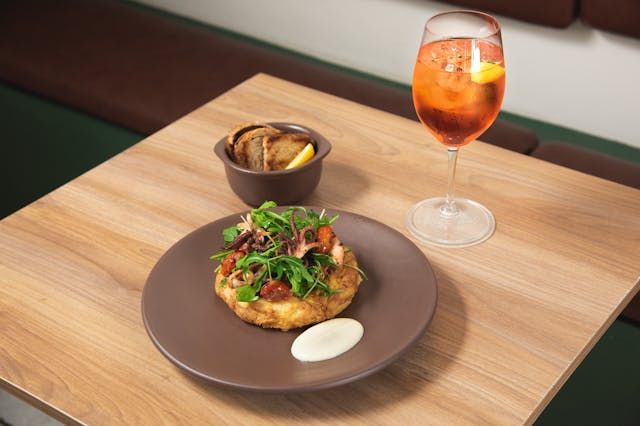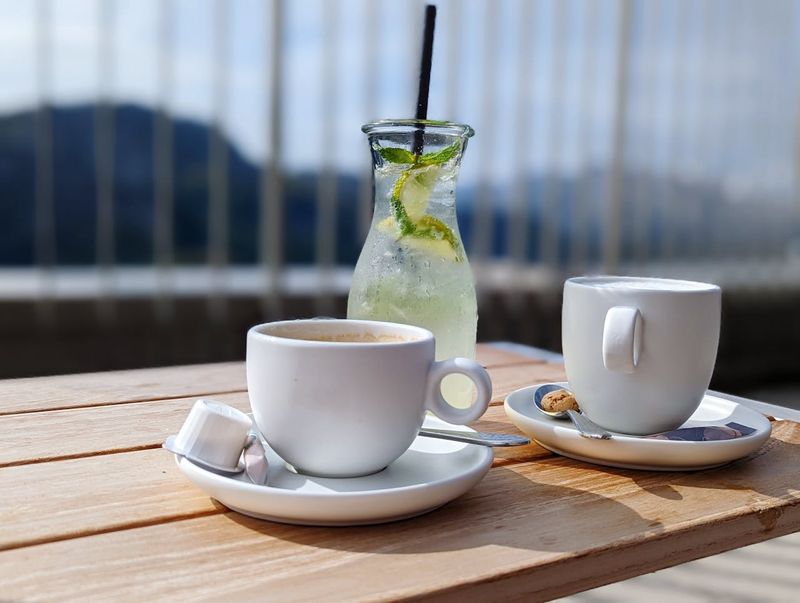The irresistible appeal of the Italian aperitivo is manifested through one of its most iconic symbols: the spritz.
This beloved cocktail has captured the palates of millions of people around the world, embodying the elegance and vibrancy of Italy.
But behind its global fame lies a nuanced and traditional history, particularly evident in its original form: the white Venetian spritz.
Venetian white spritz

The art of making and enjoying a spritz has deep roots in Venetian culture.
Although today we mainly associate it with its orange or red version, with a touch of bitter aperitif and a slice of orange, its original form is very different and dates back centuries, when Venice was the crossroads of cultures and traditions.
White spritz in Venice
The Venetian white spritz represents not only an icon of Italian culinary tradition, but also a tribute to conviviality and joie de vivre.
Through its fascinating history and endless regional variations, this cocktail continues to enchant palates around the world, transporting those who savor it on a journey through the unique atmospheres of La Serenissima.
Austro-Hungarian origins
To fully understand the significance of the Venetian white spritz, we need to go back in time to the 17th century, during the time of the Austro-Hungarian Empire.
Here, soldiers and travelers brought with them the custom of diluting local wine with sparkling water or seltzer. This practice, known as "spritzing," not only attenuated the alcohol content of the wine but also imparted a pleasant effervescence to the palate.
The term "spritz" itself comes from the German "spritzen," meaning "to splash," in reference to the act of adding carbonated water.
The Venetian white spritz, in its most authentic form, is a simple mixture of still white wine and carbonated water or seltzer.
This combination of flavors is imbued with a deep authenticity, harking back to the ancient habits of Venetians of enjoying a moment of relaxation among friends, accompanied by cicchetti and small talk.
The Iconic venetian white Spritz
Although today the spritz is known for its colorful and bitter variants, the original white spritz still lives on in the bacari and bars of the Venice Lagoon.
Ordering one means receiving a glass of still white wine "splashed" with sparkling water or seltzer. This simple yet refined tradition is a tribute to Venetian history and culture that continues to be enjoyed by residents and visitors alike.
Evolution
Over the years, the spritz has undergone many transformations, especially with the advent of the aperitif and the introduction of ingredients such as Select, Aperol and Campari.
However, although modern variants have become popular worldwide, the essence of the Venetian white spritz remains unchanged in its places of origin.
A versatile and original drink
Besides Venice, the white spritz has also influenced other regions in northern Italy, where it is known by different names such as Pirlo, bianchin sprüzà and other local variants.
This versatile drink has won the hearts of Italians and travelers around the world, becoming a symbol of Italian hospitality and good living.
Different cities in the Veneto region
Different cities and provinces in the Veneto region have contributed to the diversification of the spritz, adopting local ingredients and techniques.
For example, in Treviso people prefer to use tocai friulano, while in Padua they opt for sparkling white wine.
However, despite these regional variations, the tradition of drinking a white spritz remains a cultural and gastronomic landmark for Venetians and all those who like to immerse themselves in the city's unique atmosphere.
The venetian white Spritz in the national context
In addition to the Veneto lands, the custom of diluting white wine with sparkling water is widespread in other northern Italian regions, each with its own interpretation of the classic cocktail.
In the Brescia area, for example, people drink Pirlo, while in Milan it was common to ask for a "bianchin sprüzà."
These regional variations testify to the unwavering link between the spritz and Italian culinary identity, which continues to evolve and adapt to contemporary taste trends.

